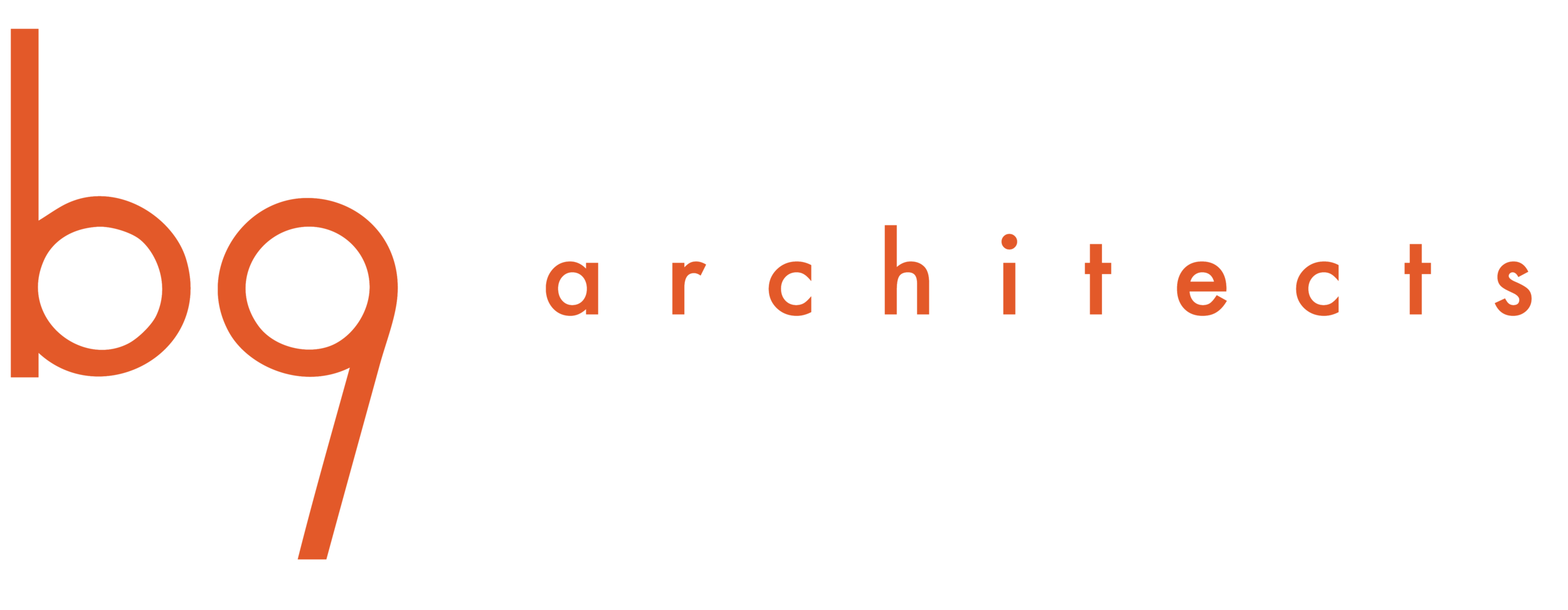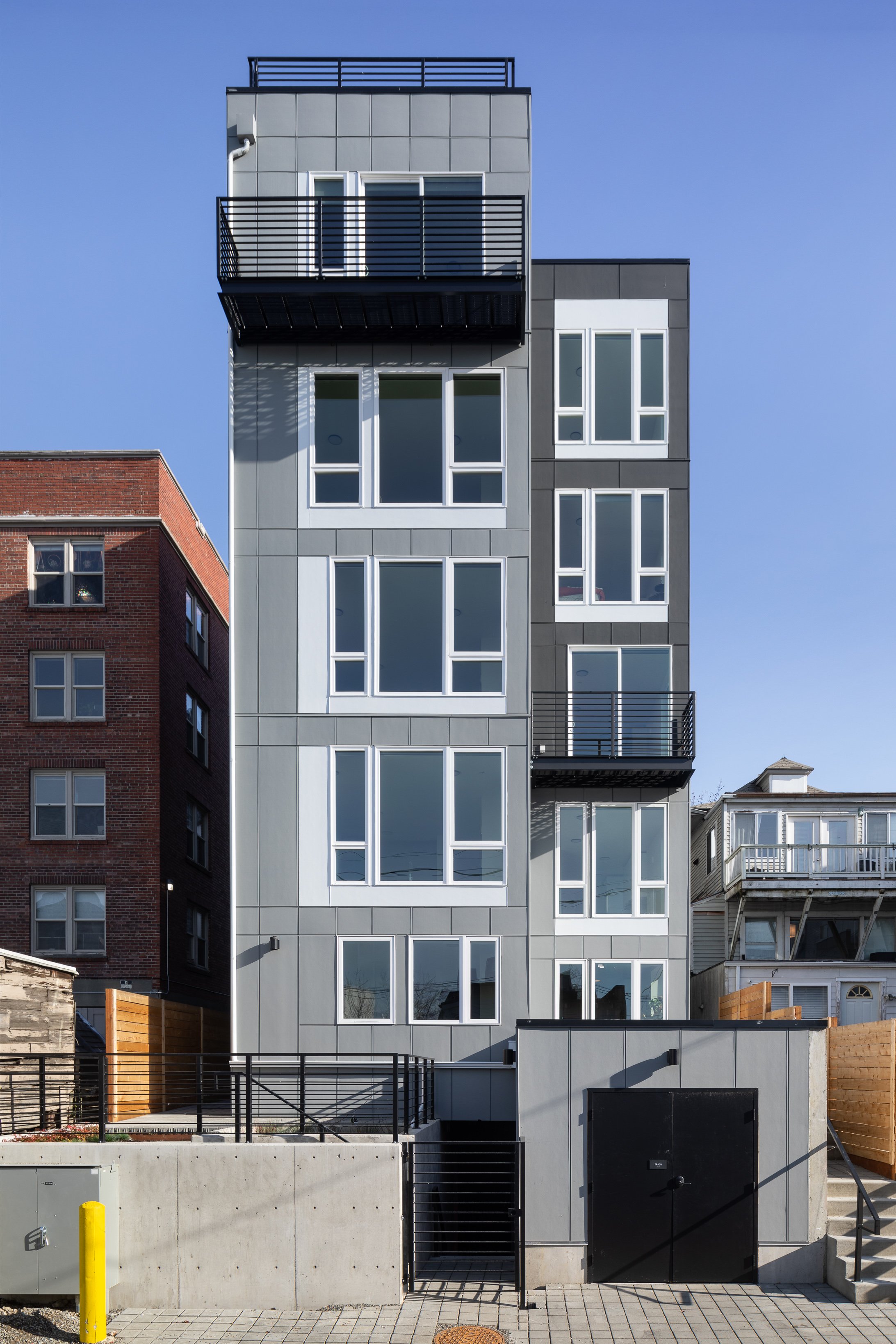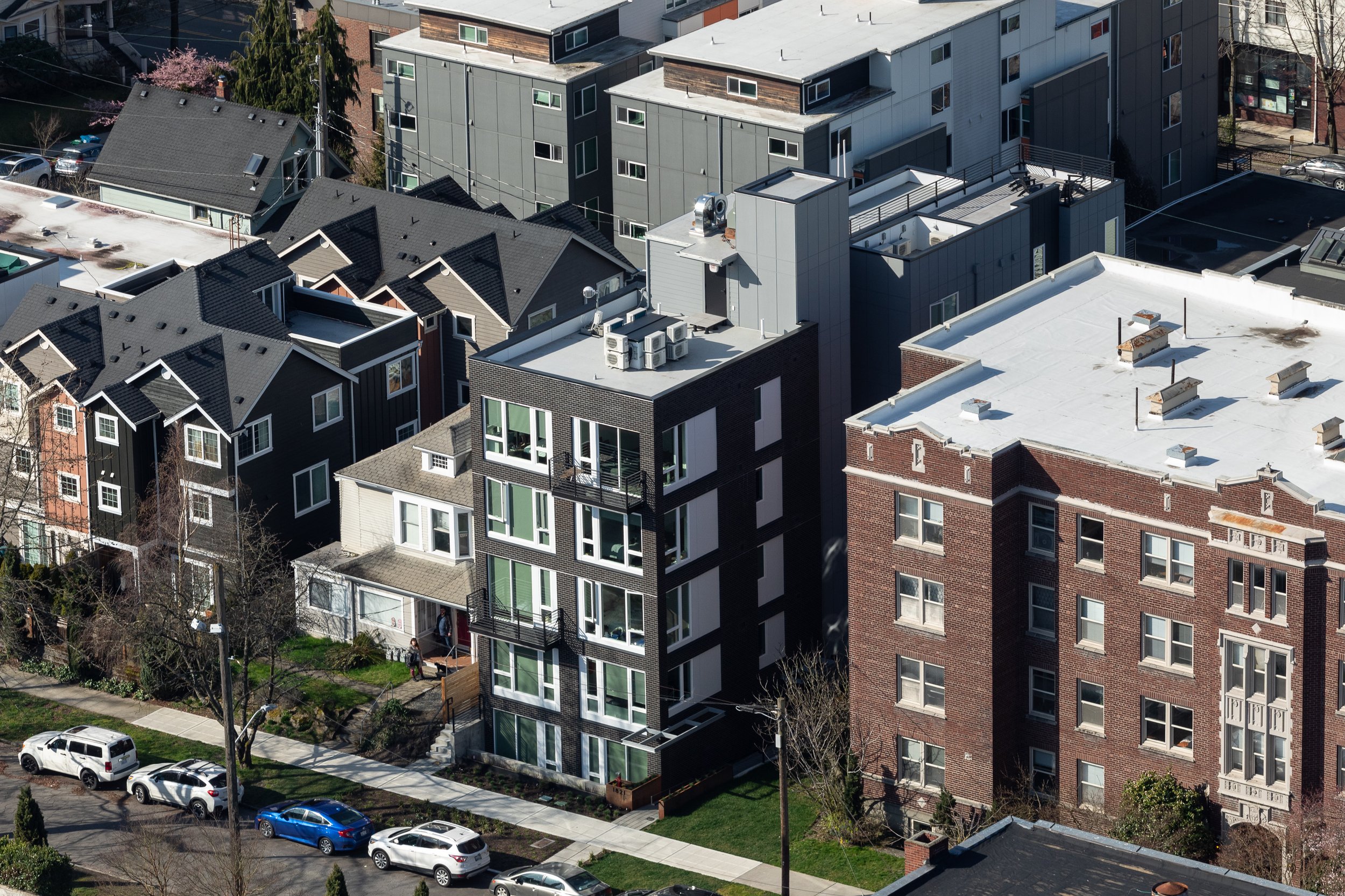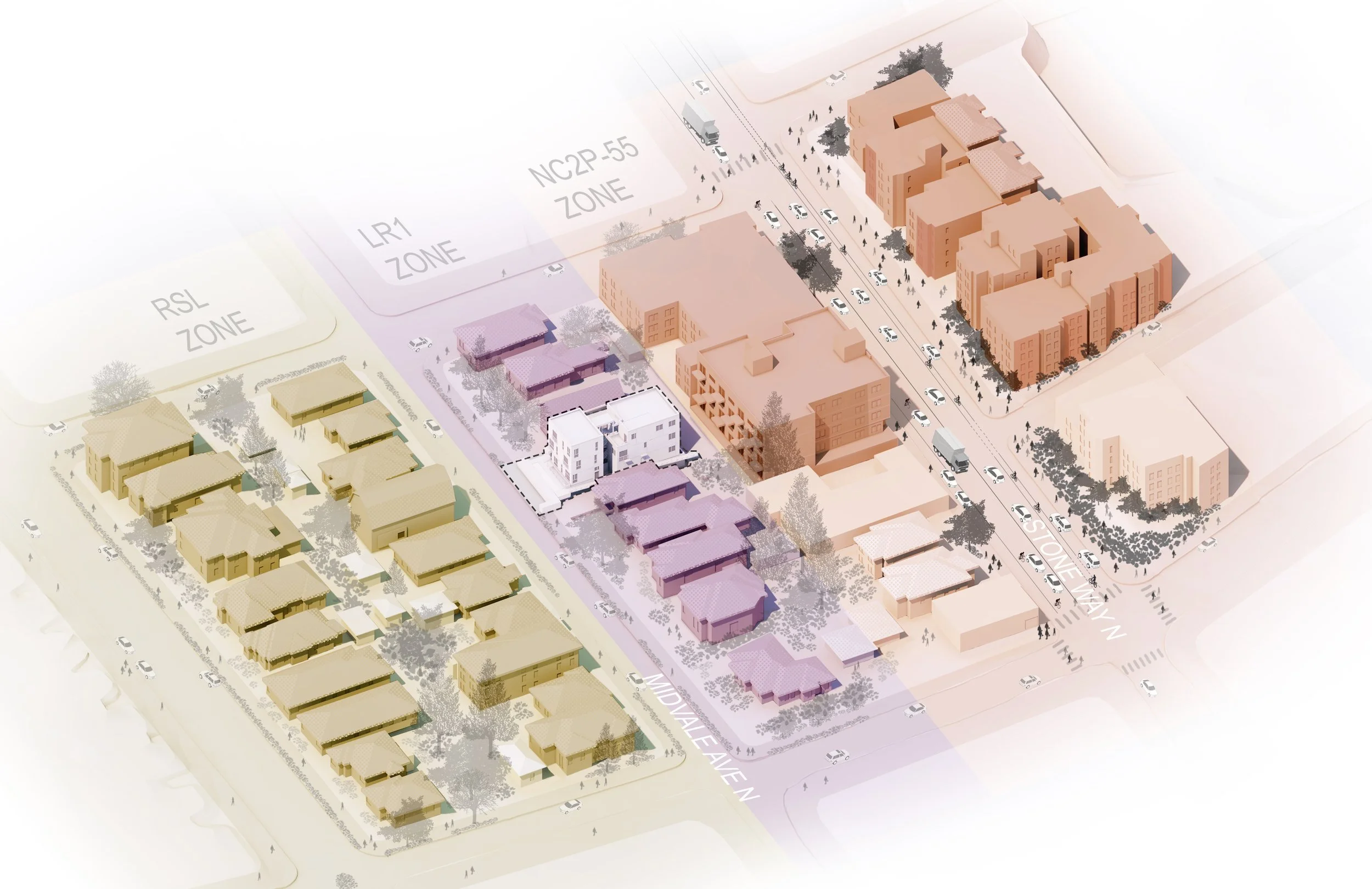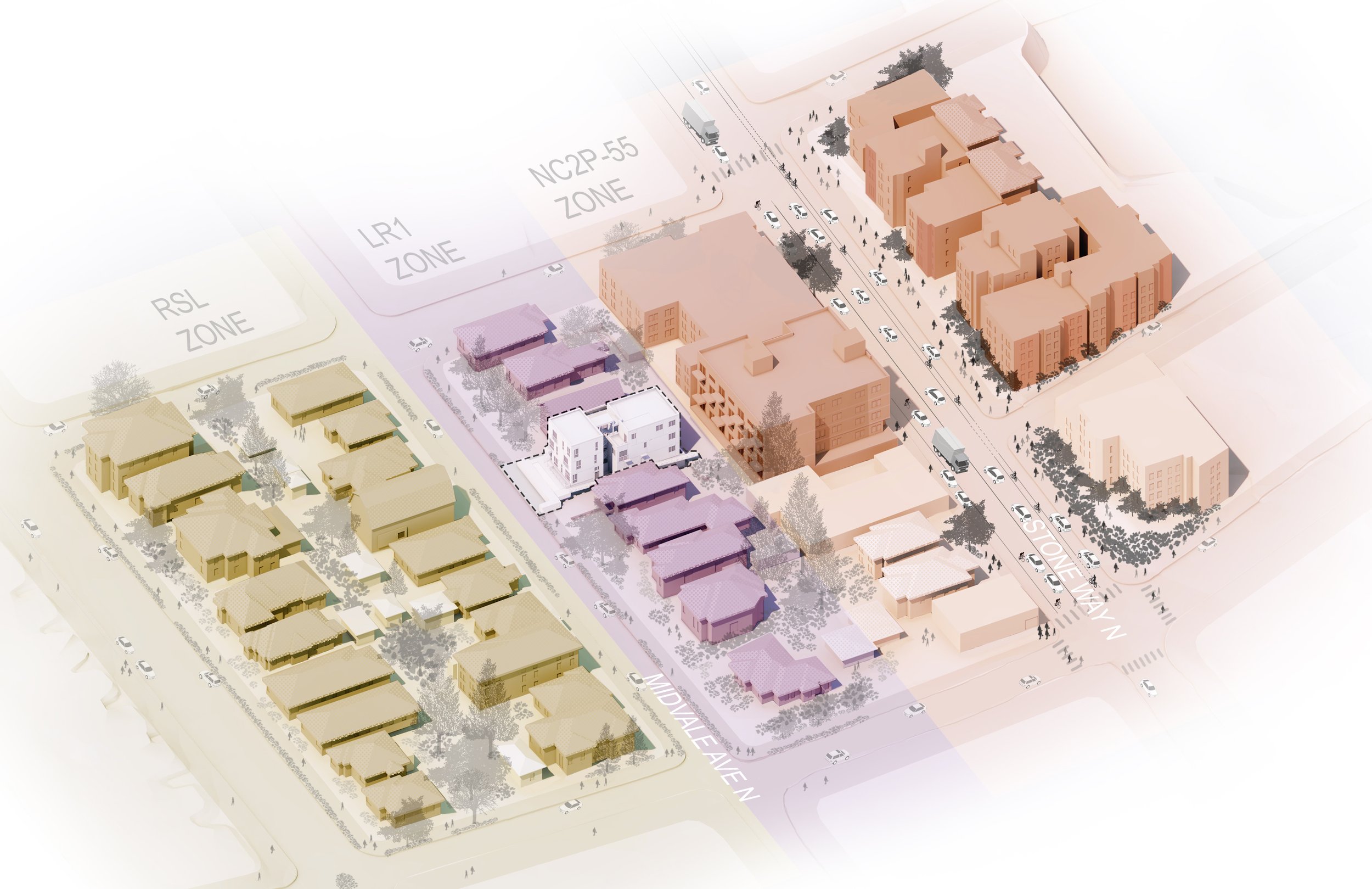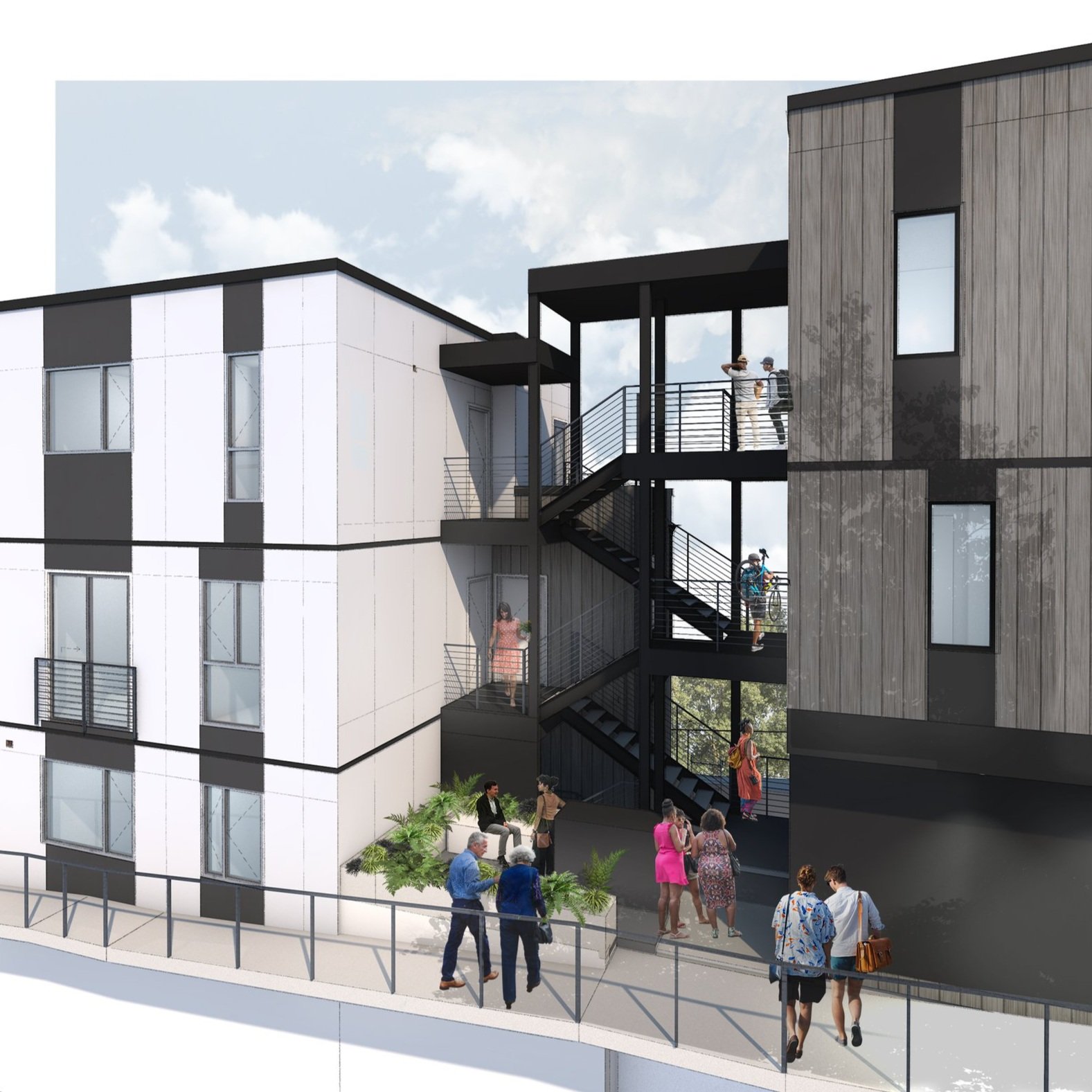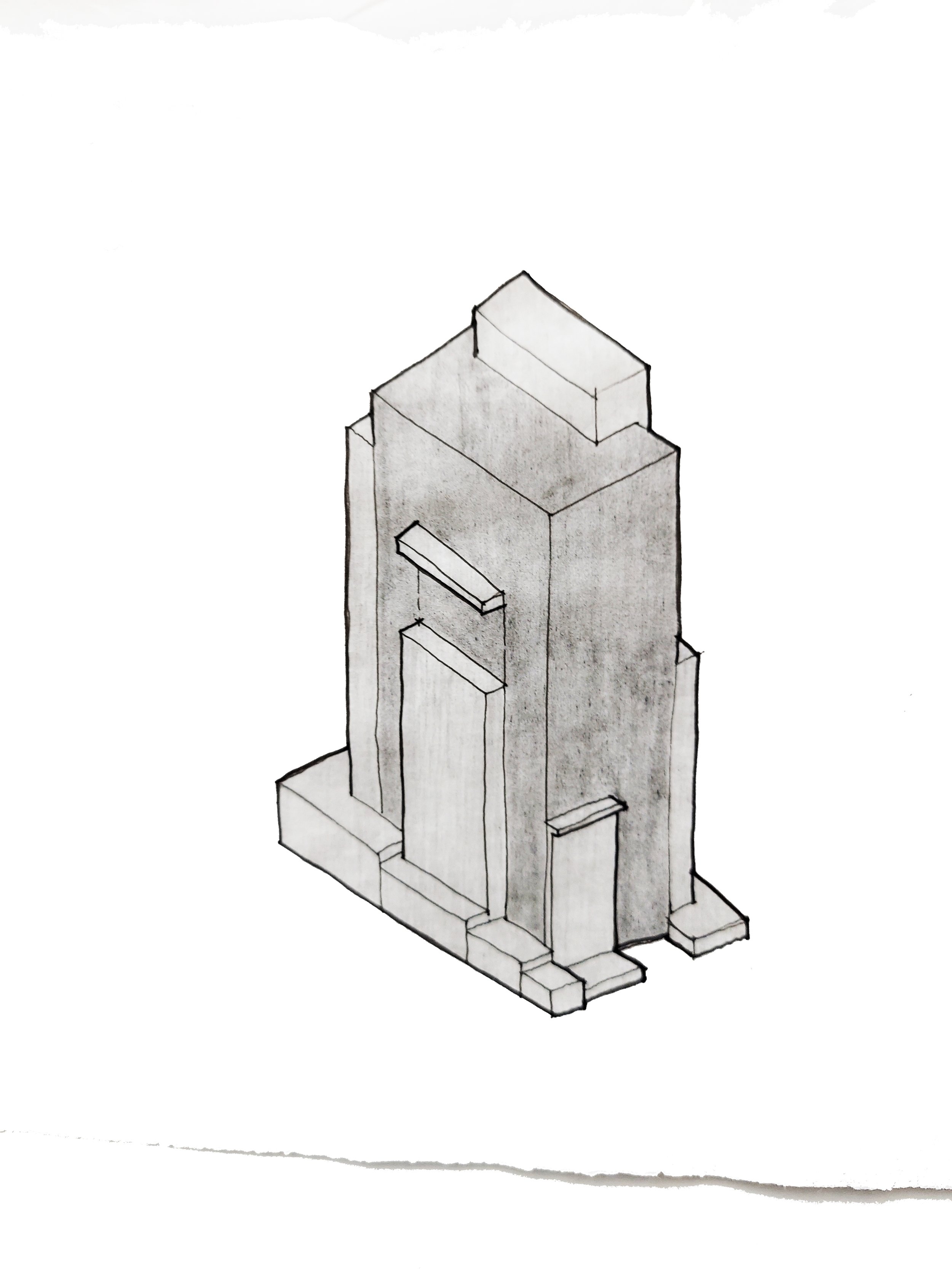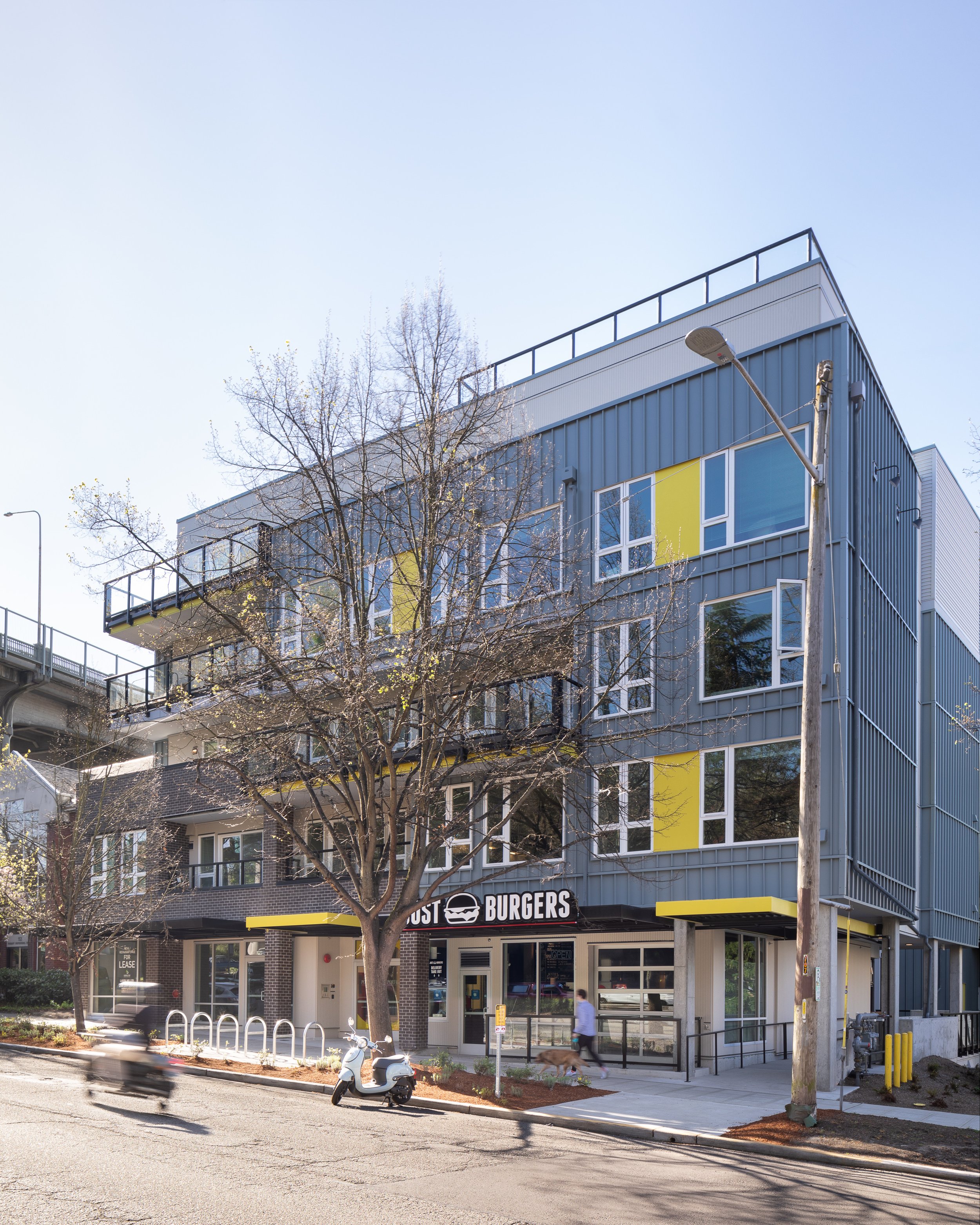b9 architects’ is thrilled to showcase the recently completed Greta apartment, a project that exemplifies our commitment to providing excellent design for all of our projects regardless of type and scale. A 33-unit Small Efficiency Dwelling Unit (SEDU) apartment completed earlier this year in Seattle's vibrant University District, Greta sets the stage for a sister project Graceland, currently under construction just next door to the rear. Together, these developments elevate residential density while adhering to a shared commitment to executing the design intent prioritized by a collaborative project team.
b9 architects kicked off both projects in 2018 to ensure they would vest to the then current municipal code. After vesting was secured, the Graceland went on hold while the team spent their focus completing Greta, the smaller project. Greta stands out with its material palette, commercial feeling, street-facing lobby and a thoughtfully designed small courtyard. It is a departure from the conventional design and entry placement in similar buildings nearby. This innovative approach\ welcomes residents into a space that fosters community and engages the street front.
Greta boasts high-quality materials such as natural finished Minerit and black stained cedar siding, creating a visually striking and high-contrast facade. Recessed balconies add depth and further enhance the aesthetic appeal, showcasing a commitment to elevating the urban living experience. Additionally, the layout of Greta prioritizes natural light and privacy, with nearly all apartments designed as corner units. This intentional configuration not only maximizes access to daylight but also minimizes privacy concerns, creating a comfortable and inviting living environment for residents.
As Greta was wrapping up construction in 2023, the b9 team focused on completing Graceland’s entitlement processes and construction drawings. Phasing the two projects allowed us to learn from the first design and construction process. We saw our client’s commitment in executing the design intent of Greta, and worked to bring our BIM model and documentation to our current standard in preparation for a robust building phase.
A larger, more complex project, the 54-unit Graceland introduces an exterior lobby as part of its entry sequence, engaging residents and visitors in a unique double-height open-framed portal from the street into a central courtyard. This innovative design fosters a sense of connection and community right from the moment of arrival. Distinguishing itself further, Graceland features predominantly exterior circulation. A steel stair directly facing the street and exterior walkways at all floors contribute to the project's dynamic and engaging urban presence. Residents will experience a seamless blend of indoor and outdoor living.
Leveraging the advantage of a double lot, Graceland incorporates a central courtyard accessible to all residents and visitors. An indoor amenity "living room" anchors the rear of the courtyard, providing a space to activate the outdoor environment and foster a sense of community. The landscape design for the project was specifically designed to connect the sidewalk to the shared amenity space and exterior stairway with varying pavement materials and a series of small Maple Trees and landscaping to maximize greenery in the courtyard.
We are excited to see these two projects complement each other and add meaningful density to the University District. b9 architects is always interested in creating thoughtfully designed spaces in all of our projects, no matter the size or budget, and we are thrilled to be working with a client interested in the same. Greta and Graceland are proving to be exemplary precedents of this project type in this neighborhood.
